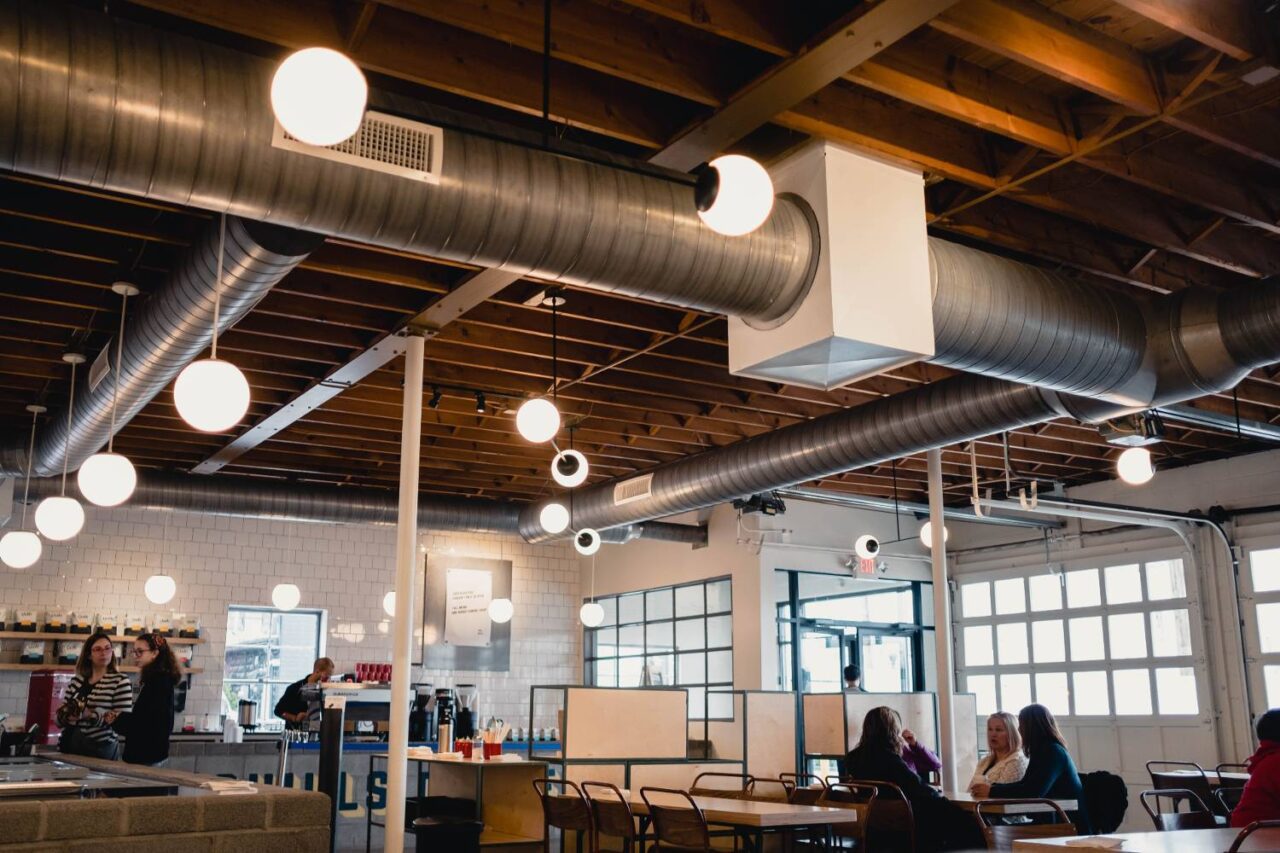When was the last time your club had a ventilation inspection?

HSE inspectors spot checking clubs on their Local Exhaust Ventilation systems
Local Exhaust Ventilation systems, also known as LEV equipment, are responsible for the clean air and reduction of dust particles at your place of work. The HSE, Government Health and Safety inspectors, will be stepping up their spot-checks of ventilation systems as per the Control of Substances Hazardous to Health 2002 law. This is due to a number of recent reports on occupational health; including lung disease, COVID-19, asthma, asbestos, fumes and dust exposure.
At Club Insure, we explain why HSE inspectors are cracking down and what the most common problems they are looking for so you can remedy the issue before it becomes an issue for your club.
What is Local Exhaust Ventilation and what are the dangers?
Powered ventilation and extraction is an engineered solution to ensure an adequate supply of fresh air to workplaces. All workplaces must have adequate fresh air, be it by natural or powered ventilation. A full ventilation system is found in most large premises, and comprises of many parts. These include the hood, ducting, filter, air cleaner, fan and exhaust stack; however each system has its own specifications and requirements.
A properly designed system will draw dust fumes gases and vapour through a hood and move it away from the working space. It will then replace the air with clean fresh air. It needs to be able to effectively capture dangerous substances before they are inhaled and cause harm.
The dangers of an under ventilated area which have been recently reported on include:
Asthma – From a 2021 report, There were an estimated 174 new cases of occupational asthma reported by doctors as part of a scheme in 2019.
Cancers of the respiratory system – According to HSE statistics, there are 12,000 lung disease deaths each year estimated to be linked to past exposures at work.
Chronic obstructive pulmonary disease – Form a 2021 report, 15% of COPD deaths are due to occupational exposures, equalling 4,000 deaths per year.
Mesothelioma – 2% to 10% of people exposed to asbestos for prolonged periods of time contract pleural mesothelioma. Their life expectancy is 12 to 22 months.
Silicosis – The HSE have very recently written guidance on how to avoid the dangers of occupational silicosis. It involves effective ventilation to remove silica particles and new manufacturing regulations.
A warning over HSE spot-checks of ventilation systems comes after a 2021 report which analyses the impact of the coronavirus pandemic. The scale of the changes and disruption to the sector have been unprecedented. Guidance on the ventilation of indoor spaces to reduce the spread of respiratory infections was updated. Air cleaning devices were not suitable, only extensive LEV systems which would require upkeep, safety checks and maintenance.
What are HSE inspectors looking for when it comes to Local Exhaust Ventilation?
Here are the most common problems encountered when inspecting exhaust ventilation systems and how to they are treated:
Blocked filters – Blockages in the LEV filtration system can occur because of many different reasons. The main reason generally happens as a result of poor maintenance. Upon inspection, engineers will measure the efficiency of the filter and its condition.
Obstructions in the extraction duct – When heavier particles such as sawdust are filtered efficiency of the LEV system will be reduced. In this condition the system would not remove the contaminated air from the designated place of work. A report of examination would identify any areas of concern, identify the location of the blockage, and the logical approach to take.
Extraction hoods positioned incorrectly– The positioning of the extraction hood can have a very significant effect on the LEV system’s operation. If the system is not correctly positioned, the system could be leaving contaminants to continue to circulate and be inhaled. The physical positioning of extraction hoods is assessed at every inspection.
Damaged extraction hoods – The efficiency of the system will be reduced is the hood has received damage such as holes. The physical integrity of the system is assessed at every examination with damaged areas including holes reported.
System that are no longer fit for purpose – Having the appropriate system in place is essential. In the majority of cases, the original systems fitted are appropriate. However, over time additional extraction points are quite often added and in doing so the capability of the system is compromised. At every examination a ‘fit for purpose’ assessment is conducted.
When should I get my Local Exhaust Ventilation system assessed?
Clubs should undertake a thorough inspection and check their LEV system every 14 months.
LEV systems will also need to be assessed if you’ve had a major refurbishment or an increase to the rooms and workspaces at your premises. Certain activities are only suitable in ventilated areas, such as sports halls and bingo venues; if you plan on running a large event, having new activities, double check your ventilation arrangement beforehand.
To get an inspection arranged before it’s too late, contact Club Insure. We will arrange for a full inspection of your Local Exhaust Ventilation system and help to ensure the safety of your staff and visitors. If no changes are made, a claim of this severity could spell the end for your club, contact Club Insure to remain fully financially protected.






